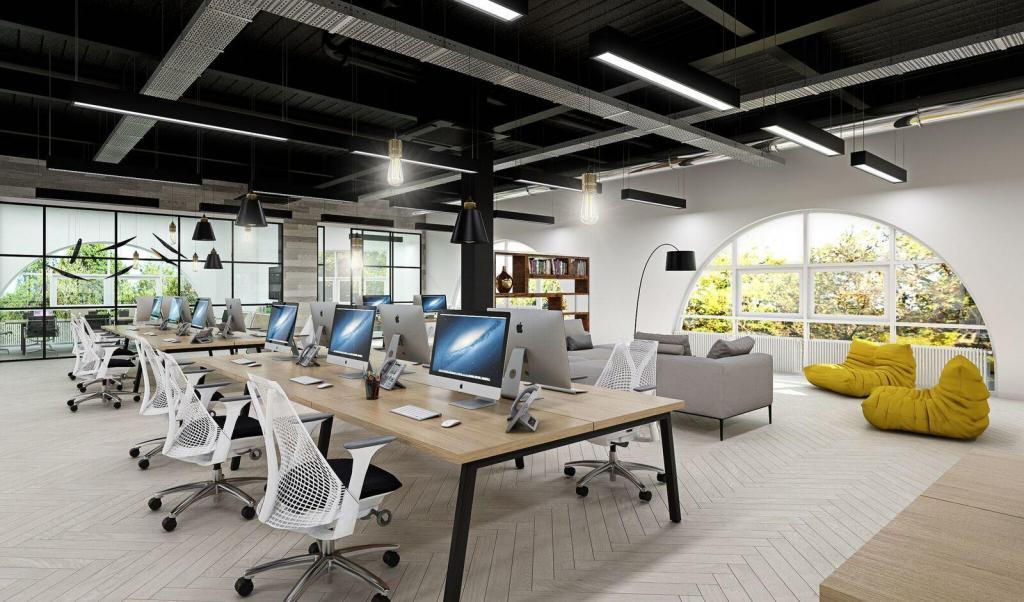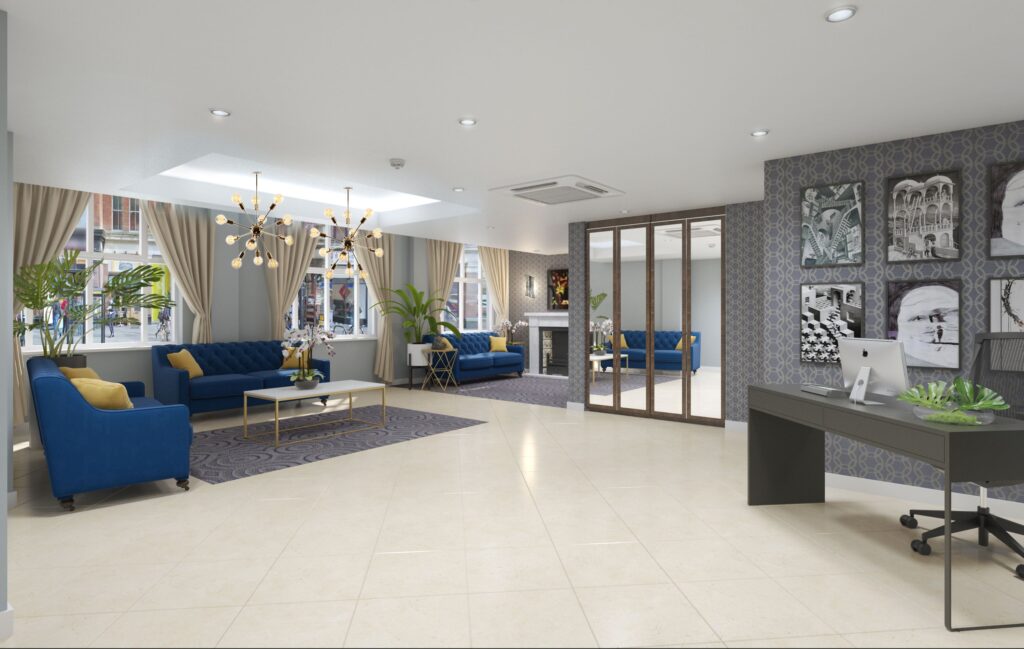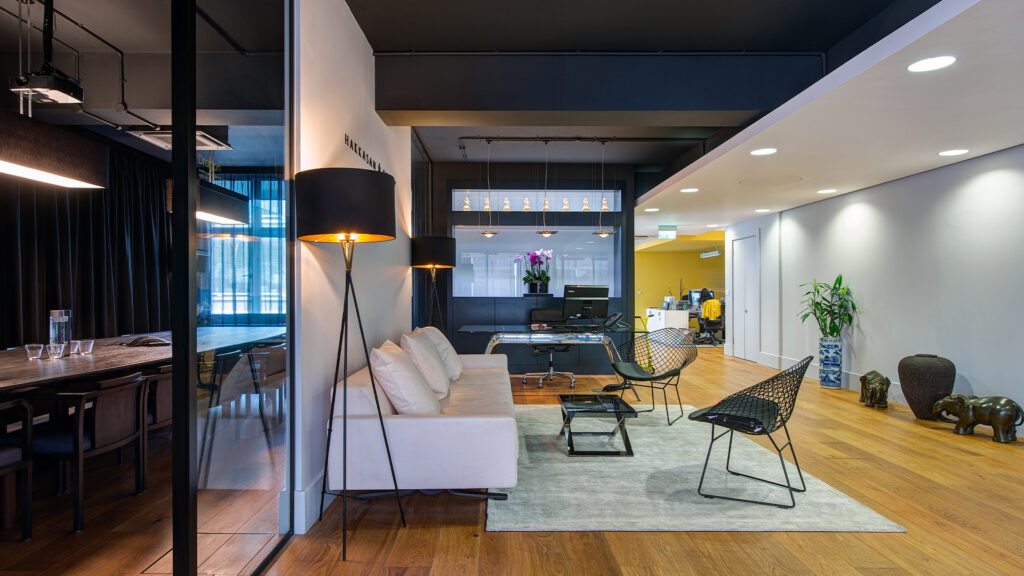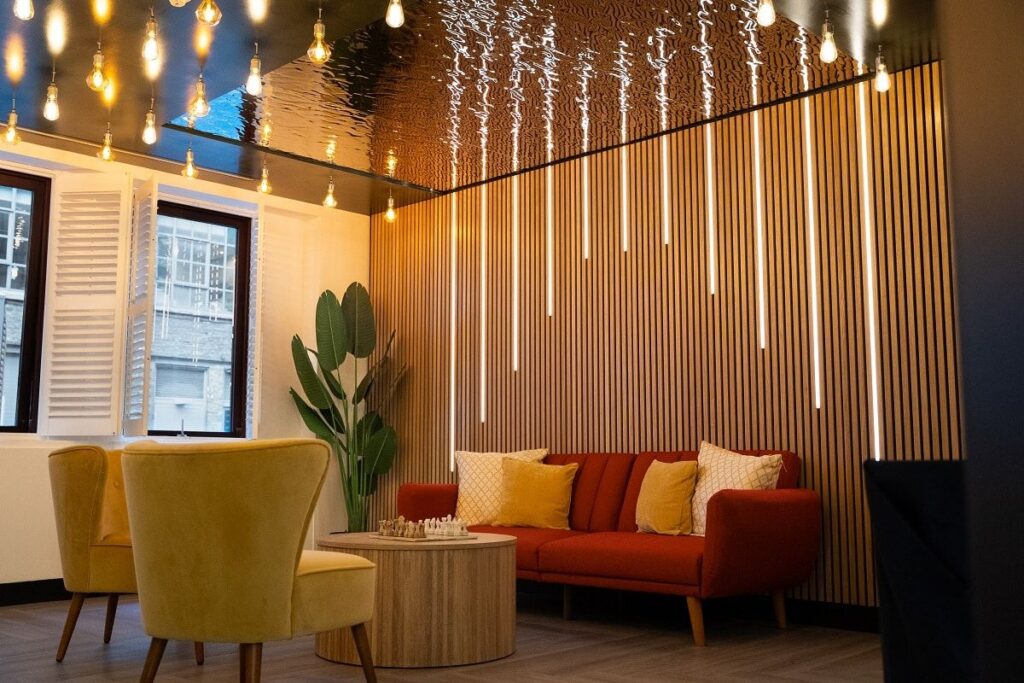A noisy office can quickly turn from a lively atmosphere into a frustrating environment. Conversations echo, phones ring endlessly, and the hum of printers and keyboards can create a constant backdrop of distraction.
If your team struggles to focus or feels drained by the end of the day, poor acoustics might be to blame. This guide looks at how an effective office fit out can help you manage sound and reclaim control of your workspace.
Why Poor Office Acoustics Matter
When noise levels are unmanaged, concentration drops and stress rises. According to the Health and Safety Executive (HSE), exposure to high noise levels at work can negatively affect health and increase the risk of accidents. In an open-plan setting, even low-level noise, if constant, may reduce work performance.
Uncontrolled acoustics can lead to:
- Decreased concentration
- Lower employee satisfaction
- Increased error rates
- Higher absenteeism due to stress
Understanding the Basics of Office Acoustics
Before you start making changes, it is essential to understand what contributes to poor acoustics. In a typical office environment, sound waves bounce off hard surfaces such as walls, ceilings, floors, and desks. The more hard surfaces there are, the more echoes and background noise you will have.
There are three key types of noise to consider:
- Airborne noise: Conversations, telephones, and office machinery
- Impact noise: Footsteps, furniture movement, and door slams
- Structure-borne noise: Vibrations transmitted through walls, floors, and ceilings
Strategies to Improve Office Acoustics
If your workplace feels louder than it should, there are practical steps you can take to manage noise and create a more productive environment.
1. Use Sound-Absorbing Materials
Adding materials that soak up sound is one of the simplest ways to improve acoustics. Soft furnishings, carpets, acoustic panels, and ceiling baffles help absorb noise and prevent echoes. Choosing these during your office fit out stage ensures they are integrated seamlessly into the design.
Key options include:
- Acoustic ceiling tiles
- Upholstered furniture
- Fabric wall panels
- Heavy curtains and rugs
2. Install Acoustic Partitions
Acoustic partitions break up open spaces and stop sound from travelling freely across the office. Glass partitions with acoustic treatment allow you to maintain a sense of openness while controlling noise.
Consider:
- Desk dividers
- Floor-to-ceiling partitions
- Movable acoustic screens
3. Optimise Office Layout
How you organise your space makes a big difference. Grouping noisy areas like break rooms, kitchens, and meeting spaces away from quiet work zones helps minimise disruption. Similarly, placing printers and copiers in dedicated rooms with sound insulation keeps mechanical noise away from employees.
4. Choose the Right Flooring
Hard floors reflect sound, while softer flooring absorbs it. Carpet tiles are an excellent choice for offices because they dampen both airborne and impact noise.
Options to consider include:
- Acoustic-rated carpets
- Cork flooring
- Rubber-backed floor tiles
5. Introduce Sound Masking Systems
Sound masking involves using low-level background noise to make speech less intelligible, reducing distractions. Modern sound masking systems are subtle and can be tailored to your office layout.
These systems can be especially useful for the following types of office space:
- Open-plan areas
- Call centres
- Private offices
6. Integrate Plants into the Office
Biophilic design is about more than looks; plants can genuinely improve office acoustics. Leaves and branches scatter and absorb sound waves, reducing noise levels naturally.
Consider:
- Living green walls
- Large potted plants
- Hanging plant installations
7. Pay Attention to the Ceiling
Ceilings are often overlooked when it comes to acoustics. Acoustic ceiling panels, suspended acoustic rafts, and acoustic plasterboards are effective ways to reduce noise levels from above.
Incorporating these elements during an office fit out is the most efficient time, allowing for full integration with lighting and HVAC systems.
Common Mistakes to Avoid
Even with the best intentions, it is easy to make errors when trying to manage office acoustics. Avoid these common pitfalls:
- Ignoring noise sources: It is crucial to identify and isolate major noise contributors early.
- Over-treating spaces: Adding too much soft material can create a “dead” space where conversations sound flat and unnatural.
- Poor material choice: Ensure that materials are rated for acoustic performance.
Benefits of a Quieter Office
Improving office acoustics delivers more than a peaceful atmosphere. The advantages include:
- Better focus and productivity
- Enhanced employee wellbeing
- Easier confidential conversations
- Improved client impressions
- Stronger teamwork due to clearer communication
A thoughtful office fit out that prioritises acoustics can transform how your team experiences their day-to-day work environment.
Practical Steps to Get Started
If you are ready to take control of your noisy workspace, start by conducting an acoustic audit. Identify noise hotspots and assess your existing materials and layouts. Next, work with a professional fit out company to design solutions tailored to your needs.
Priorities for your acoustic-friendly office fit out might include:
- Choosing the right surfaces
- Planning zoning carefully
- Considering future needs like growth or flexible working
Make sure to test solutions along the way to ensure they genuinely improve the environment.
You might like this guide: How To Soundproof An Open Office.














